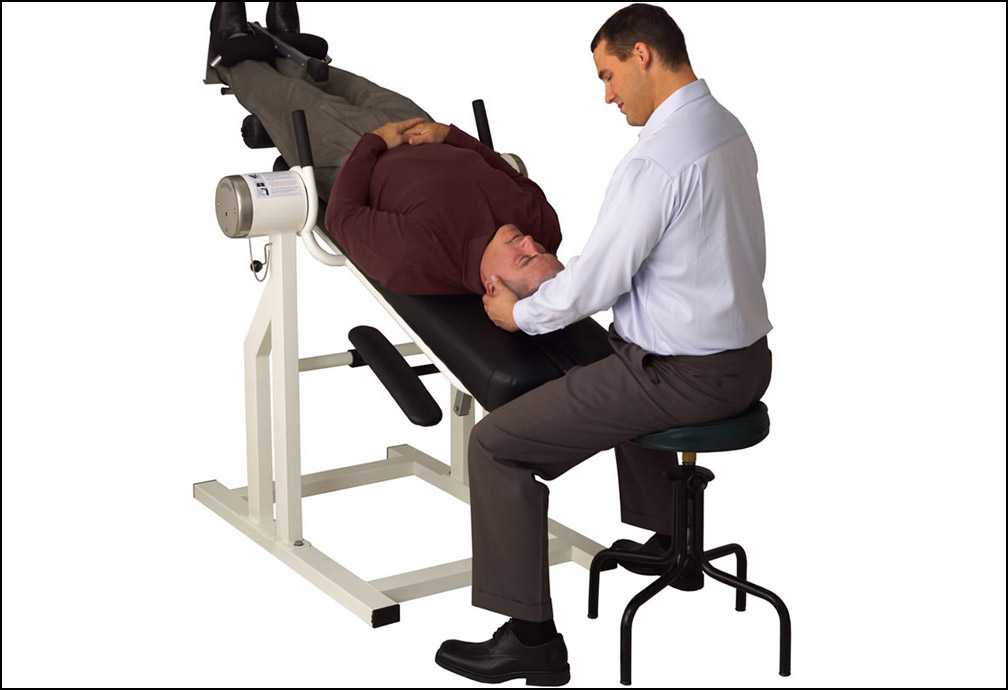Inversion table therapy
“Managing pain, restoring comfort – one step at a time.”

Inversion table therapy is a type of therapy that involves using an inversion table, which is a device that allows the user to hang upside down or at an inverted angle. The therapy is based on the idea that reversing the effects of gravity on the body can have therapeutic benefits.
Proponents of inversion table therapy claim that it can help alleviate back pain, improve circulation, relieve stress, and reduce the effects of aging. However, there is limited scientific evidence to support these claims, and some medical professionals caution that inversion table therapy may not be safe for everyone, particularly those with certain medical conditions such as high blood pressure, heart disease, or glaucoma.
If you are interested in trying inversion table therapy, it is important to consult with your doctor first to make sure it is safe for you. Additionally, it is important to follow the manufacturer’s instructions carefully and to start slowly, gradually increasing the duration and frequency of your sessions as you become more comfortable with the therapy.
Inversion table therapy is a type of therapy that involves using an inversion table to hang upside down or at an inverted angle to relieve back pain, improve circulation, and reduce stress. The theory behind this therapy is that by inverting the body, the force of gravity is used to decompress the spine, which can help to reduce pressure on the nerves and relieve pain.
During inversion table therapy, the individual lies on a table that can be tilted to different angles. The individual’s feet are secured to the table, and the table is tilted so that the head is lower than the feet. This position is thought to help the spine relax and decompress, which can alleviate back pain.
Inversion table therapy is not recommended for everyone, and it is important to speak with a healthcare provider before trying it. People with certain medical conditions, such as high blood pressure, heart disease, and glaucoma, may not be good candidates for this therapy. Additionally, inversion table therapy should be approached with caution, as it can cause dizziness or lightheadedness, and the inverted position can put additional strain on the joints and muscles.
Inversion table therapy is a form of therapy that involves hanging upside down or at an inverted angle on an inversion table. The therapy is said to relieve pressure on the spine, stretch and decompress the spine, increase blood flow to the brain, and provide relief from back pain.
The theory behind inversion therapy is that it helps to counteract the effects of gravity on the spine, which can compress the discs and cause pain or discomfort. Inversion tables work by using gravity to gently stretch and elongate the spine, creating space between the vertebrae and reducing pressure on the discs.
Inversion therapy is not recommended for everyone, particularly people with certain medical conditions, such as high blood pressure, heart disease, glaucoma, or pregnancy. Before trying inversion table therapy, it is important to consult with a doctor or healthcare professional.
Additionally, it is important to use an inversion table properly and to start with a low angle of inversion and gradually increase over time. Users should also make sure to secure their feet and ankles and use the table in a safe and stable environment.
Overall, inversion table therapy may provide benefits for some people with back pain or other spinal conditions, but it is not a cure-all and should be used with caution and under the guidance of a healthcare professional.
Inversion table therapy involves using an inversion table, which is a device that allows a person to hang upside down or at an inverted angle to help alleviate back pain and improve overall spinal health.
The theory behind inversion therapy is that by hanging upside down, gravity can help to decompress the spine, reduce pressure on the discs, and improve circulation in the back muscles. This can help to alleviate pain and improve mobility in the back and neck.
However, it is important to note that inversion therapy may not be suitable for everyone, particularly those with certain medical conditions such as high blood pressure, heart disease, or glaucoma. It is recommended that anyone considering inversion therapy consult with their doctor first to determine if it is safe for them.
Additionally, it is important to use the inversion table properly and under the guidance of a qualified healthcare professional to avoid injury.
